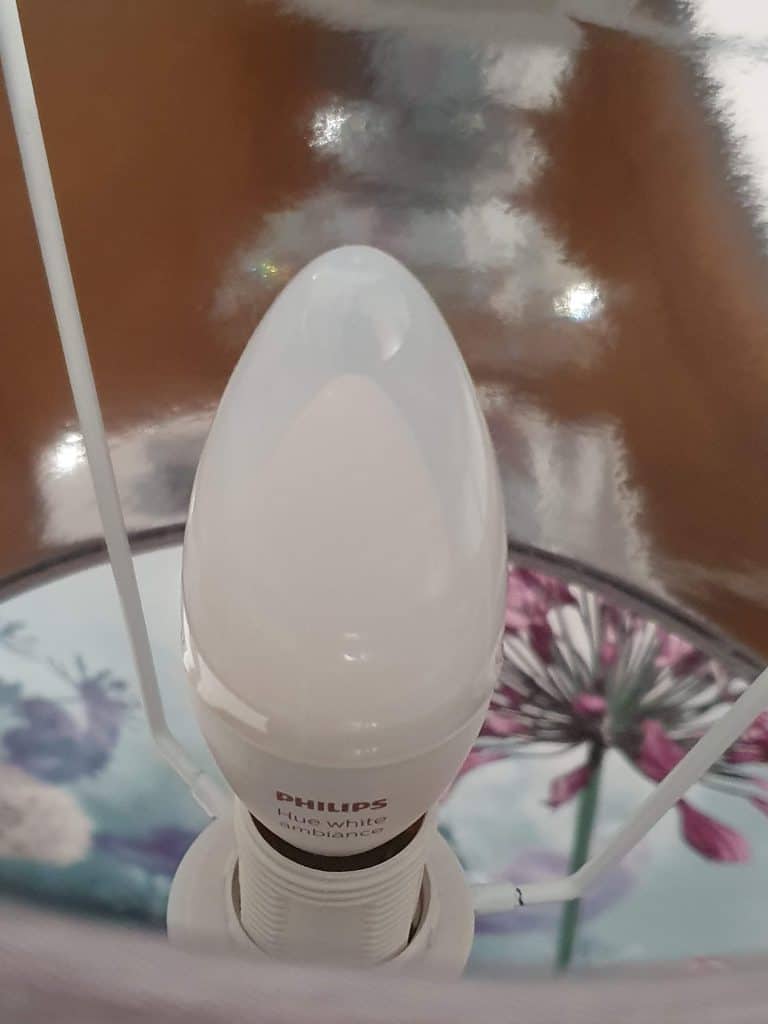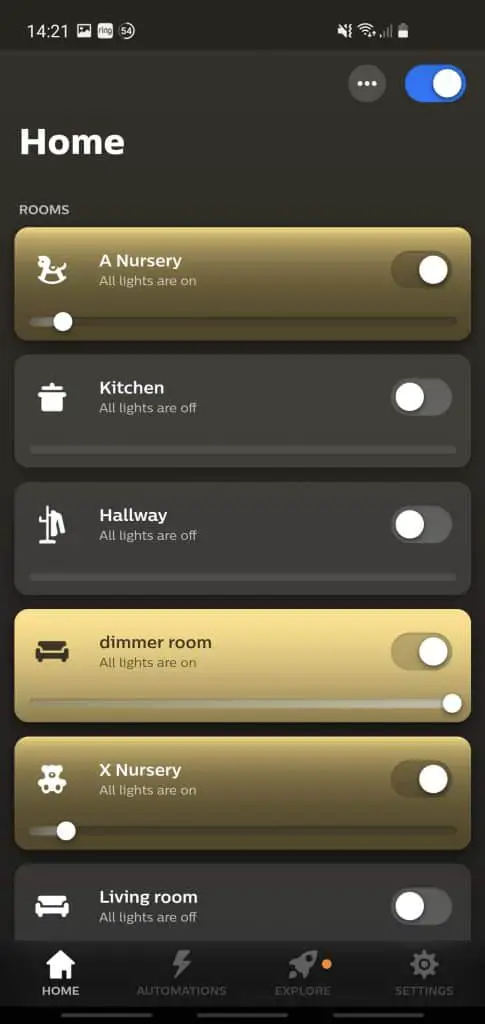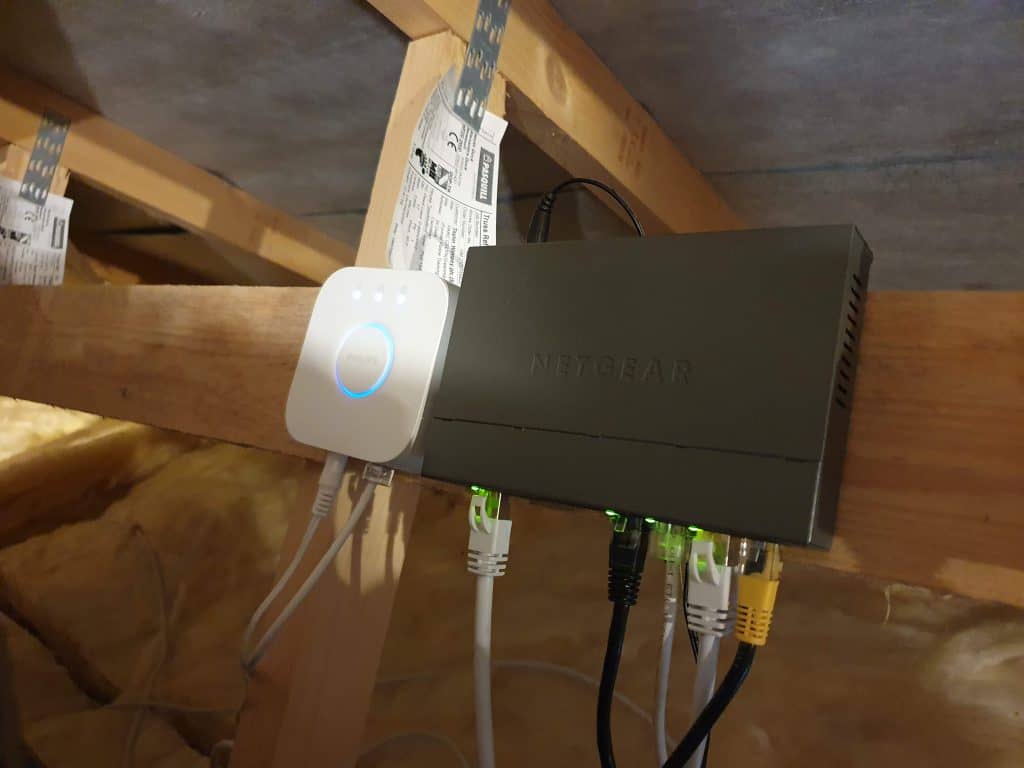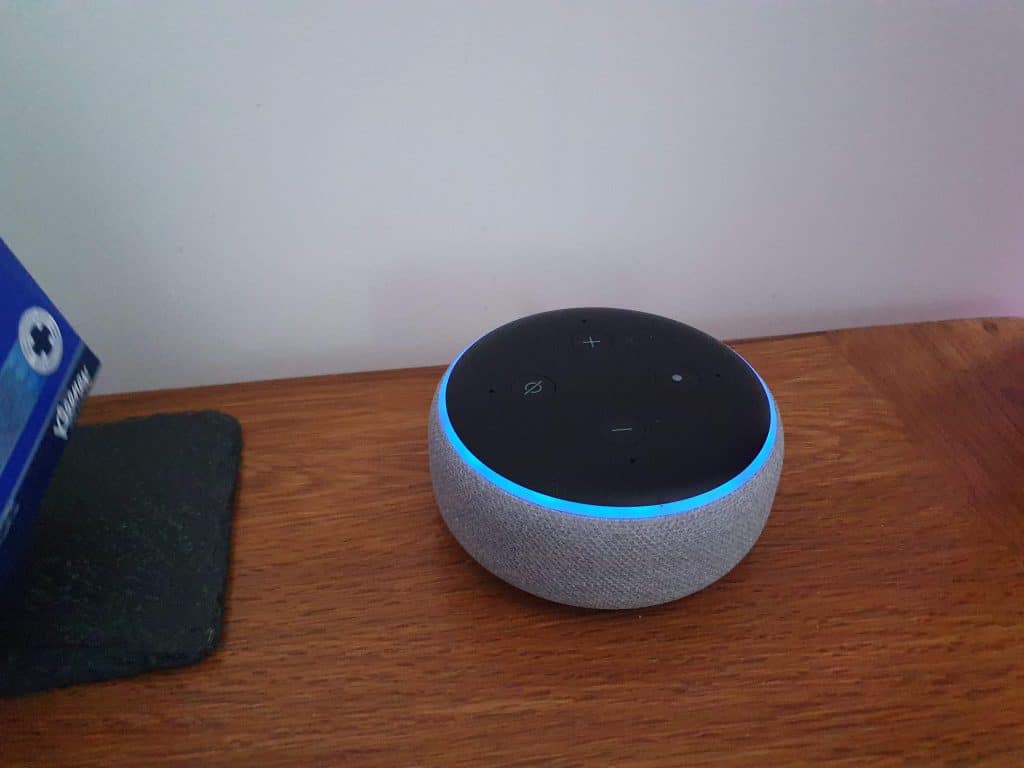Philips Hue is among the most popular brand of smart light in the world, and for good reason. It’s responsive, easy to set up, and comes with a ton of color options—16 million, to be exact! Plus, they come in a variety of shapes and sizes, from fixtures to accessories.
Like most smart devices, Philips Hue lights must be connected to an external device for hands-off operation. But what is the max range of Philips Hue’s network? It’ll be quite inconvenient to buy the lights only to face connectivity issues.
According to Philips, the Hue Bridge works as long as the device is close to the router (since it needs to be plugged in via Ethernet).
But what if you have a large house? Alternatively, what if you don’t have a Wi-Fi connection to begin with? We’ll answer these questions and more in this Philip Hue guide.
How Do Philips Hue Smart Lights Work?

Philips Hue smart LED lights can be controlled manually or remotely. Recent generations also has two methods of connectivity: Bluetooth and ZigBee.
You probably already know what Bluetooth is. Simply connect the lights to your phone or your tablet via Bluetooth and control them directly with the Philips Hue Bluetooth app. The app allows you to fully organize and customize your Hue lights and accessories with little effort (the accessories include a dimmer switch and motion sensor). Best of all, it’s free. It doesn’t require a monthly subscription to unlock its neat perks.
Hue’s ZigBee is a wireless communication technology that follows the same concept of Wi-Fi and Bluetooth, except it’s specially designed to control the lights of your home. Unfortunately, you can only access ZigBee through the companion device called the Hue Bridge.
Philip’s smart bulbs have built-in Zigbee radios, as does the Hue Bridge. The Bridge doesn’t work on its own, so it needs to be plugged into a home router via Ethernet Cable. The router acts like a Zigbee-to-Wi-Fi translator, allowing you to control the lights of your home through the Philips Hue app.

You need a stable Wi-Fi connection for the Bridge to work. It must be connected to your router at all times. This might be an issue for individuals without an internet connection in some parts of the house.
Hue Bridge vs. Bluetooth: Which Connection Is Best for You?
Before Philips Hue introduced Bluetooth connectivity in 2019, the smart system relied on an external hub called the Hue Bridge. The Hue Bridge is sold separately for around $50 and connects to your router via the Ethernet cable, where you can then control through the Philips Hue app.
Today, you don’t need a Hue Bridge to control your Hue smart lights. However, the device does increase not only your range but the product’s functionality and features. Let’s look at the difference between the two connection methods.
Philips Hue Bridge — Advantages and Disadvantages

The Hue Bridge uses a wireless technology called ZigBee. ZigBee links Philips smart devices like lights, locks, cameras, and plugs to your home network using one convenient tool.
When you connect your lights to the Bridge, each bulb acts as an extender. This increases the range across your home and reduces the risk of signal dropouts.
One of the best things about the Bridge is the fact that you can control your home’s lighting anywhere in the world. As long as the Bridge is connected to a stable Wi-Fi connection, you can turn your lights on and off whenever and wherever you want through the app. This is extremely useful for keeping intruders out while you’re away for business.
With the Bridge, you can connect up to 50 different smart lights in one application. You can even add non-Philips lights like INNR, Ikea TRÅDFRI, Sengled, and others to the hub.
If you have over 50 lights, you’ll have to purchase another Hue Bridge or connect the rest with Bluetooth. But you’ll have to download a separate application for Bluetooth-controlled lights.
Pros
- Connects to up to 50 lights
- Supports other smart bulb models
- Voice control
- Extended range
- Out-of-home control
- Compatible with Apple HomeKit
Cons
- Fairly expensive
- Must be connected to an internet router
Philips Hue Bluetooth — Advantages and Disadvantages
Bluetooth LE and ZigBee 3.0 run on the same 2.4 GHz (2,400 MHz) radio frequency band. However, Bluetooth sends and receives data faster than ZigBee. This is still great news for Bluetooth users, as they won’t have to worry about delays or anything of the sort.
The biggest benefit of connecting your smart lights to a Bluetooth connection is cost. Compared to the Bridge, where you’ll have to pay an average of $50 on top of the smart lights you already have, Bluetooth connectivity is 100% free.
Also, it’s way more convenient. With the Bridge, you have to connect the device to an Ethernet cable. If you don’t have a router or an Ethernet cable, you’ll be forced to install or purchase one for your home to use the Bridge. You don’t have to worry about all this with Bluetooth. Simply download and connect. That’s it.
Bluetooth-connected Hue lights can also be connected directly to Google Home speakers and Alexa for voice control. Bluetooth Hue lights are compatible with the entire Google Home and Nest Home range, as well as second and third-generation Echo Dot. This is a fantastic option for individuals seeking voice control.

Unfortunately, Bluetooth Hue lights aren’t compatible with the Apple HomeKit. But the limitations don’t just end there. With Bluetooth, you can only connect to 10 lights instead of 50. This might be a hindrance if you live in a large home. You can’t control the lights when you’re outside the home, either.
Another disadvantage of Bluetooth-connected Hue lights is their limited range. You can only control lights on the same floor. If your home has thick walls, your range will be even more limited.
Pros
- Supports voice control when connected to Alexa or Google Home
- Easy setup
- Free
Cons
- Not compatible with lights from other manufacturers
- Limited range
- Connects to only 10 lightbulbs
- Doesn’t have out-of-home control
What Is the Max Range of the Philips Hue Bridge?

Thanks to ZigBee, the Philips Hue Bridge has a higher range than Bluetooth. In theory, the ZigBee network has an infinite range. It’s only truly limited by the strength of the ZigBee bridge/hub.
Bluetooth is more limited. With Bluetooth, you can only control the lights in one part of your house. You’ll have to be in the same area, too.
According to the book Comprehensive Energy Systems, ZigBee can control devices within the 10-to-100-meter range in outdoor situations, but it can easily extend to up to 300 meters if there aren’t any obstacles blocking the connection.
With indoor situations, this figure might drop to 50 to 70% depending on the layout of the home.
That said, ZigBee technology acts like a mesh provider, which is perhaps the inspiration of the “Bridge” name. Basically, every bulb connected to the ZigBee network acts as a bridge. One bulb picks up the other bulb’s signals, which are then transferred to another bulb, further extending the range.
So, if you have multiple bulbs interconnected with each other, you shouldn’t face any issues at all in terms of range and connectivity. In cases where the signal doesn’t pick up somewhere in the middle, all you have to do is to put a Hue bulb between the bridge and the device. The extra bulb or switch will function as a “repeater.”
What Is the Max Range of the Philips Hue Bluetooth?
In outdoor situations, Bluetooth connectivity can reach around 75 meters. The connection is unsurprisingly less indoors, clocking at around 7 to 9 meters. The greater the distance between you and the lights, the poorer the connection.
Therefore, you likely won’t be able to control first-floor lights via Bluetooth if you’re on the second floor, as it only covers a range of 30 or so feet.
Conclusion
The max range of Philip Hue’s network depends on the system’s connectivity method. For Bluetooth-powered lights, the max range is around 30 feet. If you’re using the Hue Bridge, the lights will work within the range of the Wi-Fi and the ZigBee network, which can extend to 300 feet.
The Bluetooth option gives you an overall impression of smart lights’ look and feels before committing to a full-fledged Hue system. If you have multiple Hue bulbs, I recommend investing a couple of dollars for a Hue Bridge so you can get the best of the technology.
